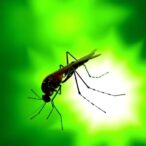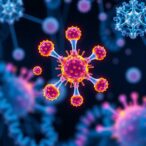
A breakthrough in cancer research has emerged from a team of engineers and biomedical scientists at NYU Tandon School of Engineering, led by Professor Weiqiang Chen. Their pioneering development of a microscope slide-sized “leukemia-on-a-chip” is poised to revolutionize the way blood cancer treatments are tested and personalized. This diminutive device replicates the complex bone marrow microenvironment and incorporates a functioning human immune system, offering an unprecedented platform for studying leukemia and evaluating immunotherapies with remarkable precision and speed.
Traditional methods for testing cancer therapies, especially CAR T-cell treatments, have long relied on animal models or standard in vitro assays, both of which suffer from significant limitations. Animal models, while valuable, fail to mirror the intricacy of human immune responses adequately and require months of preparation and observation. Conversely, conventional lab tests do not replicate the dynamic interactions between cancer cells and immune effectors in their native microenvironment. The new bioengineered leukemia chip addresses these challenges head-on by authentically reconstituting the three critical bone marrow regions: blood vessels, the marrow cavity, and the outer bone lining. This structural fidelity is complemented by the system’s ability to self-organize and generate extracellular matrix proteins such as collagen, fibronectin, and laminin, thereby preserving the native immune milieu crucial for accurate functional analysis.
What sets this leukemia-on-a-chip apart is its integration of patient-derived bone marrow cells, offering a personalized and immunocompetent platform for real-time visualization and functional interrogation. Using cutting-edge imaging technologies, researchers captured the behavior of CAR T-cells as they navigated the vascular spaces, identified leukemic cells, and executed targeted cytotoxic actions. Such dynamic observation revealed that engineered immune cells exhibit purposeful motility: they actively patrol their environment, decelerate upon encountering malignant cells, and engage in sequential killing—a process that was previously inscrutable in living human tissues.
.adsslot_2OMJ3GLXR0{width:728px !important;height:90px !important;}
@media(max-width:1199px){ .adsslot_2OMJ3GLXR0{width:468px !important;height:60px !important;}
}
@media(max-width:767px){ .adsslot_2OMJ3GLXR0{width:320px !important;height:50px !important;}
}
ADVERTISEMENT
Importantly, the team identified a “bystander effect” phenomenon, wherein the activated CAR T-cells stimulate ancillary immune cells not directly engineered for targeting leukemia. This finding provides critical insight into the therapy’s wider immunological impact and may underpin both its therapeutic efficacy and adverse side effects, including cytokine release syndrome. Such a discovery underscores the nuanced interplay between engineered and natural immune components, advancing our understanding of patient response variability and toxicity profiles.
The leukemia chip further enabled simulation of diverse clinical scenarios frequently observed in patients undergoing CAR T-cell therapy. By manipulating the system parameters, the researchers recreated states such as complete remission, therapeutic resistance, and transient response followed by relapse. These models allowed comparative evaluation of next-generation “fourth-generation” CAR T-cells, which possess enhanced design attributes aimed at improving performance. The study demonstrated that these advanced CAR T-cells achieved superior leukemia clearance, particularly at reduced doses, highlighting their potential to increase treatment efficacy while minimizing side effects.
One of the most remarkable advantages of this technology is its rapid assembly and operational capacity, which sharply contrasts with the protracted timelines required for animal studies. The leukemia-on-a-chip can be fabricated in approximately half a day and sustain experiments lasting up to two weeks. This expedited workflow not only accelerates therapeutic screening but also aligns with regulatory trends, such as the recent FDA initiative to phase out mandatory animal testing for drug development, thereby addressing ethical considerations and reducing costs.
The system’s utility extends beyond visualization, incorporating a computational “matrix-based analytical and integrative index” that quantitatively assesses multiple facets of immune response within the tested environment. This multidimensional metric enhances the predictive power of preclinical models, offering clinicians a robust tool to forecast the success of specific CAR T-cell therapies for individual patients. By delivering granular data on cellular dynamics and therapy outcomes, the chip paves the way for truly personalized immunotherapy regimens.
The implications of this innovation are transformative. As Professor Chen articulates, the technology holds promise to shift cancer treatment paradigms from a one-size-fits-all methodology to bespoke therapeutic strategies based on comprehensive pre-treatment testing. Such precision medicine approaches have the potential to optimize patient outcomes, reduce adverse reactions, and streamline clinical decision-making in hematological oncology.
Collaboration was integral to this project, drawing expertise from multidisciplinary teams across NYU Tandon, the University of Colorado Anschutz Medical Campus, NYU Grossman School of Medicine, and the University of Pennsylvania. The research was supported by notable institutions including the National Science Foundation, National Institutes of Health, and several cancer research foundations dedicated to advancing immunotherapy development.
This leukemia-on-a-chip not only marks a technological milestone but also represents a powerful example of how engineering innovations can intersect with biomedical science to accelerate translational medicine. Its capacity to emulate a complex human tissue niche within a manageable and observable model holds promises for expanding beyond leukemia to other cancers and immune-related diseases.
With the convergence of advanced bioengineering, immunology, and computational analytics, this device could usher in a new era of preclinical testing platforms. Such platforms may ultimately reduce reliance on animal models, hasten experimental throughput, refine therapeutic design, and most importantly, enhance the clinical management of patients afflicted by hematological malignancies globally.
In sum, this cutting-edge preclinical tool embodies the future of immunotherapy development by bridging the gap between laboratory research and patient-specific treatment optimization. By providing unprecedented clarity into immune-cancer cell interactions and enabling rapid, comprehensive therapy evaluation, it stands as a beacon for personalized medicine in the fight against leukemia, inspiring hope for improved outcomes and innovative cancer care solutions.
Subject of Research: Not applicable
Article Title: Bioengineered immunocompetent preclinical trial-on-chip tool enables screening of CAR T cell therapy for leukaemia
News Publication Date: 1-Jul-2025
Web References:
https://engineering.nyu.edu/faculty/weiqiang-chen
https://www.fda.gov/news-events/press-announcements/fda-announces-plan-phase-out-animal-testing-requirement-monoclonal-antibodies-and-other-drugs
https://www.fda.gov/media/186092/download?attachment
https://www.nature.com/articles/s41551-025-01428-2
http://dx.doi.org/10.1038/s41551-025-01428-2
References: Article published in Nature Biomedical Engineering
Keywords: Bioengineering, CAR T-cell therapy, leukemia, immunotherapy, preclinical model, organ-on-a-chip, tumor microenvironment, bone marrow mimicry, personalized medicine, immunocompetent model, alternative to animal testing
Tags: bioengineered cancer research toolsbone marrow microenvironment replicationcancer therapy testing innovationsCAR T immunotherapy advancementsextracellular matrix protein generationhuman immune system integrationimmunocompetent leukemia modelsleukemia-on-a-chip technologyNYU Tandon engineering breakthroughsovercoming limitations of animal modelspersonalized cancer treatment platformsprecision medicine in oncology


